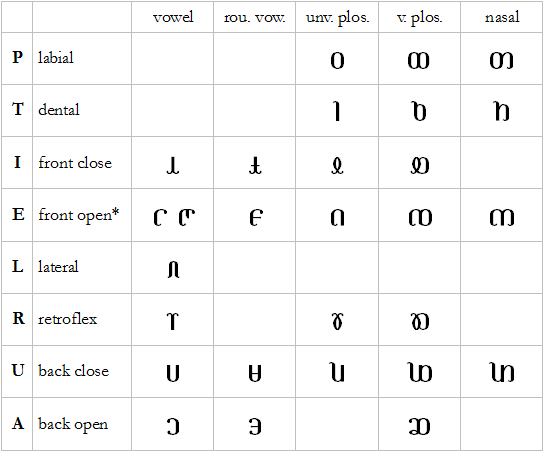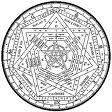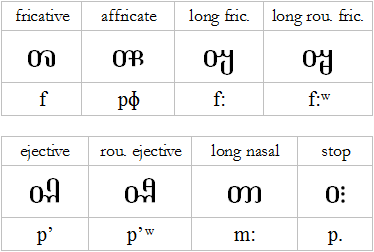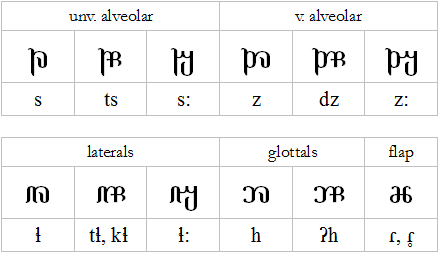This is a development of the SIGIL script (the 33rd version) which is based on the groupings and base shapes of version 32. The aim here was to make glyphs that would contribute to a smoother and more condensed flow of “book” text.
Main families
Except for the labial and dental consonants, phonemes can be derived from the vowel regions, as with version 32. The main difference here is the central bar to show rounding.

*in the E family, the second plain vowel is the closer form /e/.
Modifiers
It is the modifiers which have changed most from the previous version. Note that long fricatives and long nasals are syllabic-final only. Here is the full set of modifiers shown with P family bases:
Special forms
The /s/ and /z/ bases are not part of the main series above, but are adapted from the T series; the tail represents a higher pitch (see its use with vowels, below). The unvoiced fricatives of the L and /h/ regions use the vowel base. The flap is used for both voiced and unvoiced situations.
There are also slight variations of the regular modifier attachment, and a ligature, for aesthetic purposes. In addition, there is a shorthand for stop + long fricative, just as there was in version 30.
Vowel marks & special unvoiced plosive effects
Vowels can be marked as even, meaning they either follow a first vowel after a consonant, or initiate a syllable; they have a weak, consonantal character. The final unvoiced vowels come in only two forms. Another effect has an unvoiced plosive produced on an inbreath.
NB. Although it is a feature of the language that plosives and flaps have an inherent schwa, it is formally enabled in this version of the script. The separate schwa vowel shown here is only necessary for other cases.
Numerals and punctuation
The numerals remain the same since version 30:
The logical separators shown here can have more horizontal bars if required, and follow a numerical hierarchy:
Sample text
This is the beginning of Shakespeare’s sonnet 18 again (transliteration), for comparison with other versions of SIGIL.
“Shall I compare thee to a summer’s day?
Thou art more lovely and more temperate;
Rough winds do shake the darling buds of May,
And summer’s lease hath all too short a date.”








